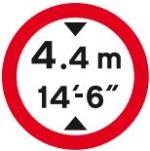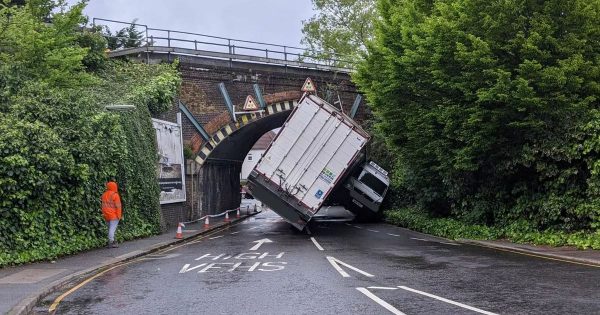Bridge strikes are a significant hazard for professional drivers, leading to severe consequences for public safety and operational costs. This article provides essential guidance for UK truck drivers to prevent bridge strikes, understand their responsibilities, and know the actions to take if an incident occurs.
Understanding Bridge Strikes
A bridge strike occurs when a vehicle, its load, or equipment collides with a bridge. These incidents commonly involve roads passing under railway bridges. The impacts of bridge strikes can be severe, including potential derailment of trains, significant disruptions to road and rail traffic, and substantial financial costs.
Driver Responsibilities
Professional drivers are responsible for preventing bridge strikes by:
- Knowing Vehicle Dimensions: Always be aware of the height and width of your vehicle, including any load.
- Planning the Route: Ensure the chosen route avoids low bridges and follows appropriate road signs.
- Obeying Traffic Signs: Pay attention to all traffic signs indicating height restrictions.
Before starting a journey, drivers should check:
- The security and safety of the load.
- The height of the cab and trailer.
- The displayed maximum height in the cab.
- The vehicle’s maximum width.
Route Planning and Navigation
Avoid taking shortcuts that might lead you to low bridges. Use LGV-specific satellite navigation systems instead of those designed for cars. If diverted from your planned route or if you encounter a low bridge, stop and seek advice on an alternative route.
Traffic Signs and Regulations

Traffic signs at bridges indicate maximum permitted vehicle heights:
- Red Circles: Prohibit vehicles over a certain height.
- Red Triangles: Warn of height restrictions ahead.
At arch bridges, white lines on the road and ‘goal posts’ on the bridge help indicate the extent of the height limit. Ensure your vehicle passes between the goalposts and proceed slowly.

Actions During a Journey
Drivers commit an offence if their vehicle exceeds 3 metres in height and the correct maximum height is not displayed in the cab. Vehicle height can change due to various factors, such as load adjustments and tyre pressures. Always recheck your vehicle height if these changes occur.
Steps to Take If a Bridge Strike Occurs
In the unfortunate event of a bridge strike, follow these steps:
- Report Immediately: Contact the Rail Authority using the number on the bridge’s identification plate to stop trains.
- Notify the Police: Use the 999 system to report the incident to the police.
- Inform Your Employer: Report the incident to your employer promptly.
- Ensure Safety: Keep the public away from the area and do not move your vehicle until authorities arrive.
For non-railway bridges, report the strike to the police and your employer, ensuring public safety by keeping bystanders away.
Consequences of Bridge Strikes
The ramifications of bridge strikes are extensive:
- Public Safety: Bridge strikes can jeopardise the safety of train passengers and other road users, potentially causing fatalities or severe injuries.
- Operational Disruption: Strikes cause delays and disruptions to both road and rail networks.
- Financial Costs: The costs include examining and repairing the bridge, recovering the vehicle and load, and compensating for delays in train services.
- Legal and Economic Impacts: Drivers may face prosecution, imprisonment, or loss of driving licenses, while companies might lose their operator’s licenses and incur increased insurance premiums.
Preventing bridge strikes is crucial for maintaining public safety and operational efficiency. By knowing your vehicle dimensions, planning routes carefully, and adhering to traffic signs, you can significantly reduce the risk of bridge strikes. In case of an incident, prompt reporting and following the correct procedures can mitigate the consequences. Stay vigilant and prioritise safety to ensure a smooth and incident-free journey.
What’s an example of a bridge that is repeatedly struck?
Harlaxton Road, Grantham, Lincolnshire has one of the most struck bridges with at least 17 strikes in 2021/22.
For more detailed information and resources, drivers and companies can refer to the official guidelines provided by Network Rail and other relevant authorities.
